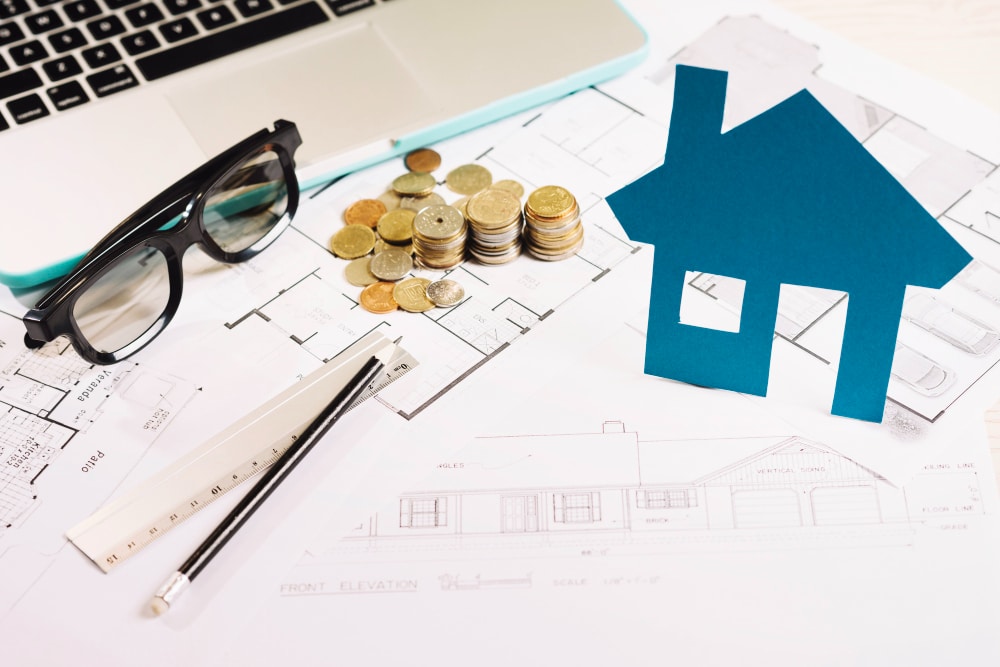
6 Best Home Remodeling Loan Options in 2024: A Comprehensive Guide
Home remodeling journey not only enhances your living space’s aesthetic and functional appeal but also significantly boosts its market value. However, navigating the financial waters to fund such transformations can seem daunting. This exhaustive guide aims to illuminate the wide array of home remodeling loan options, ensuring you can bring your dream renovations to fruition both efficiently and affordably. Whether you’re contemplating minor aesthetic tweaks or a full-scale renovation, understanding your financing options is crucial. Furthermore, check out detailed discussion about more topics where each topic is broken down.
Contents
- Home Equity Loans and HELOCs
- How to Tap into Home Equity:
- Steps for Cash-Out Refinancing:
- Personal Loans: The Most Flexible and Quick Financing Path Among Home Remodeling Loan Options
- Obtaining a Personal Loan:
- How to Qualify for Government Renovation Loans:
- Credit Cards: Convenient for Short-Term Financing
- Using Credit Cards Wisely:
- Securing a Construction Loan:
- Personal Line of Credit: An Adaptable Financial Buffer In Home Remodeling Loan Options
- Establishing a Personal Line of Credit:
- Contractor Financing: Direct but Cautious Approach
- Evaluating Contractor Financing:
- Applying for Home Improvement Loans:
- Government Grants and Assistance: Non-Repayable Funding Options
- Accessing Government Grants:
- Your Financing Journey
- FAQ
- What is the difference between a Home Equity Loan and a HELOC?
- How does Cash-Out Refinancing work for home remodeling?
- Are personal loans suitable for funding home remodeling projects?
- What are Government Renovation Loans and who qualifies for them?
- Can credit cards be used effectively for financing home renovations?
- Conclusion
Home Equity Loans and HELOCs
- Home Equity Loans (click here to read more) offer a stable, predictable funding source, providing a lump sum with a fixed interest rate over a set repayment period. Ideal for homeowners with a clear budget for their renovation projects, these loans leverage the equity you’ve built in your home.
- Home Equity Lines of Credit (HELOCs, click here to read more), meanwhile, provide a flexible credit line, allowing you to draw funds as needed, similar to a credit card but with the benefit of lower interest rates, thanks to the security your home’s equity provides. This option suits projects with variable costs or those spread out over time.
How to Tap into Home Equity:
- Assessment: First, determine the amount of equity in your home by subtracting your mortgage balance from your home’s current market value.
- Shopping Around: Compare rates from multiple lenders to ensure you’re getting the best deal.
- Application: Prepare necessary documents, such as proof of income, home appraisal, and credit score, to apply.
- Cash-Out Refinancing: A Dual-Purpose Financial Strategy
Cash-out refinancing involves replacing your existing mortgage with a new loan that’s larger than your current balance. The difference is provided to you in cash, which can be utilized for your remodeling project. This strategy can also potentially lower your mortgage interest rate.
Steps for Cash-Out Refinancing:
- Current Mortgage Review: Understand your current mortgage terms and interest rates.
- Comparative Analysis: Investigate current mortgage rates to ensure refinancing benefits outweigh the costs.
- Application Process: Similar to a mortgage application, prepare your financial documents and undergo a property appraisal.
Personal Loans: The Most Flexible and Quick Financing Path Among Home Remodeling Loan Options
Personal loans are unsecured, requiring no collateral, and can be obtained quickly, making them suitable for smaller projects or for those without home equity. They come with higher interest rates but offer speed and simplicity in funding.
Obtaining a Personal Loan:
- Credit Check: Review your credit score as it significantly impacts your interest rate.
- Lender Comparison: Explore various lenders, including online platforms, to find competitive rates.
- Quick Application: Apply with your chosen lender, providing necessary personal and financial details.
- Government Loans: Purpose-Specific Financing
FHA 203(k) and USDA Section 504 home repair loans offer special terms for renovations, focusing on making homes more livable, safe, and energy-efficient. These loans often have lower interest rates and longer repayment terms.
How to Qualify for Government Renovation Loans:
- Eligibility: Check the specific requirements for each loan type, which may include income limits, location, or project types.
- Application: Work with lenders approved by the government programs to process your application, which will include detailing your renovation project.
Credit Cards: Convenient for Short-Term Financing
Credit cards, especially those offering 0% APR introductory periods, can be a strategic choice for smaller projects or as a short-term financing solution. They allow for immediate purchases but require discipline to pay off the balance before high interest rates kick in.
Using Credit Cards Wisely:
- 0% APR Offers: Look for credit cards offering an introductory 0% APR.
- Budget Management: Plan to repay the balance before the promotional period ends to avoid high interest.
- Rewards: Opt for cards that offer cash-back or rewards on purchases to gain additional benefits.
- Construction Loans: Comprehensive Financing for Major Projects
Construction loans are short-term, covering the cost of major renovations or rebuilds, converting to a traditional mortgage upon completion. They require detailed plans and budgets, making them complex but essential for significant projects.
Securing a Construction Loan:
- Project Plan: Develop a detailed renovation plan, including timelines and budgets.
- Lender Search: Find lenders experienced in construction loans.
- Approval Process: Undergo thorough vetting, including credit checks, project appraisal, and possibly down payments.
Personal Line of Credit: An Adaptable Financial Buffer In Home Remodeling Loan Options
A personal line of credit offers a flexible, revolving fund without collateral. Though interest rates are higher, it provides a safety net for unexpected costs or ongoing projects, allowing you to borrow as needed.
Establishing a Personal Line of Credit:
- Financial Review: Assess your creditworthiness, as it will influence your interest rate and credit limit.
- Bank Offers: Approach banks with which you have existing relationships for potentially better terms.
- Usage Plan: Strategize on how to use the line of credit, keeping in mind the interest rates and repayment terms.
Contractor Financing: Direct but Cautious Approach
Some contractors offer financing for projects they undertake. While convenient, it’s essential to compare these terms with other financing options to ensure competitiveness and fairness.
Evaluating Contractor Financing:
- Terms Review: Understand the interest rates, fees, and repayment terms.
- Comparison: Ensure the contractor’s financing offer is competitive with other loan options.
- Negotiation: Don’t hesitate to negotiate terms or seek alternatives if the offer isn’t in your best interest.
- Home Improvement Loans: Specifically Designed for Renovators
These are unsecured loans offered by banks specifically for home improvement projects. They may have more favorable terms than general personal loans, depending on your creditworthiness and the project details.
Applying for Home Improvement Loans:
- Project Scope: Clearly outline your renovation project and costs.
- Credit Check: Ensure your credit score is in good standing to qualify for the best rates.
- Loan Shopping: Compare home improvement loan offers from different lenders to find the best terms.
Government Grants and Assistance: Non-Repayable Funding Options
Exploring grants and other assistance programs can provide non-repayable funding for specific projects, especially those aimed at energy efficiency, safety, or accessibility improvements.
Accessing Government Grants:
- Research: Look for federal, state, and local grant programs applicable to your project.
- Eligibility: Meet the specific criteria, which may include income levels, property location, or project type.
- Application: Complete detailed applications, often requiring project descriptions, budgets, and benefits.
Your Financing Journey
Clarify Your Remodeling Vision
Define the project scope, desired outcomes, and establish a realistic budget.
Assess Your Financial Health
Check your credit score, existing debt, and equity in your home to determine loan eligibility.
Explore Financing Solutions
Investigate various home remodeling loan options, weighing the pros and cons of each based on your project needs and financial situation.
Comparison Shop
Don’t settle for the first offer; compare rates, terms, and conditions across multiple lenders.
Understand the Fine Print
Thoroughly review all loan terms, including interest rates, fees, repayment schedules, and penalties.
FAQ
What is the difference between a Home Equity Loan and a HELOC?
A Home Equity Loan provides a fixed lump sum using your home’s equity as collateral with a set repayment schedule. A HELOC, or Home Equity Line of Credit, offers a revolving credit line with flexible borrowing and repayment options, generally at variable interest rates.
How does Cash-Out Refinancing work for home remodeling?
Cash-Out Refinancing involves replacing your current mortgage with a new one for a higher amount than you owe on your house. The difference is paid to you in cash, which can be used for home remodeling. It can also offer the benefit of lower interest rates.
Are personal loans suitable for funding home remodeling projects?
Personal loans can be suitable for smaller home remodeling projects. They are unsecured, so they don’t require collateral like your home. However, they often come with higher interest rates compared to secured loans.
What are Government Renovation Loans and who qualifies for them?
Government Renovation Loans, such as FHA 203(k) loans, are designed for home renovations. They offer favorable terms and are often easier to qualify for than traditional loans. Eligibility may depend on various factors, including the type of property and the scope of the renovation.
Can credit cards be used effectively for financing home renovations?
Credit cards can be used for financing smaller renovation projects, especially those offering 0% APR introductory periods. They provide immediate access to funds, but it’s important to manage repayments effectively to avoid high interest rates after the promotional period.
Conclusion
Selecting the right home remodeling loan options is a critical step toward realizing your remodeling goals. By meticulously evaluating your project needs, financial standing, and the diverse financing options available, you can embark on your remodeling project with confidence. Sharing your experiences and engaging with others about their home improvement journeys can also provide valuable insights and support.
Your dream of a beautifully remodeled home is filled with exciting decisions and possibilities. Armed with a strategic financing plan, you can transform your living space into a reflection of your aspirations, enhancing both its value and your quality of life.
As we wrap up this guide on navigating the seas of home remodeling loan options, we invite you to continue this journey beyond these pages. Follow us here on Instagram for a daily dose of inspiration. Why Instagram? Because we love seeing your home remodeling projects take shape to success! Tag us in your renovation photos and stories for a chance to be featured, and let’s inspire together!



